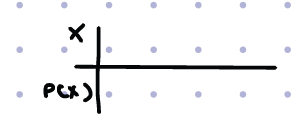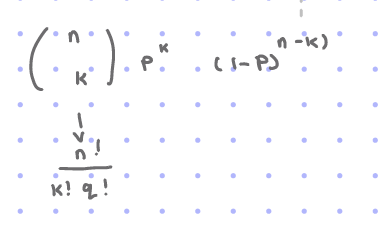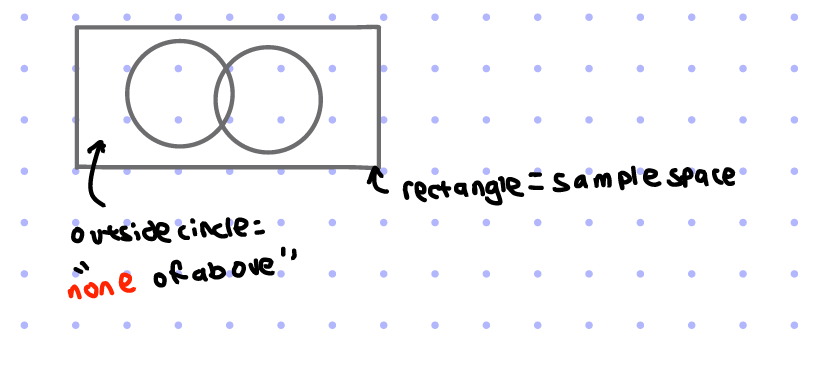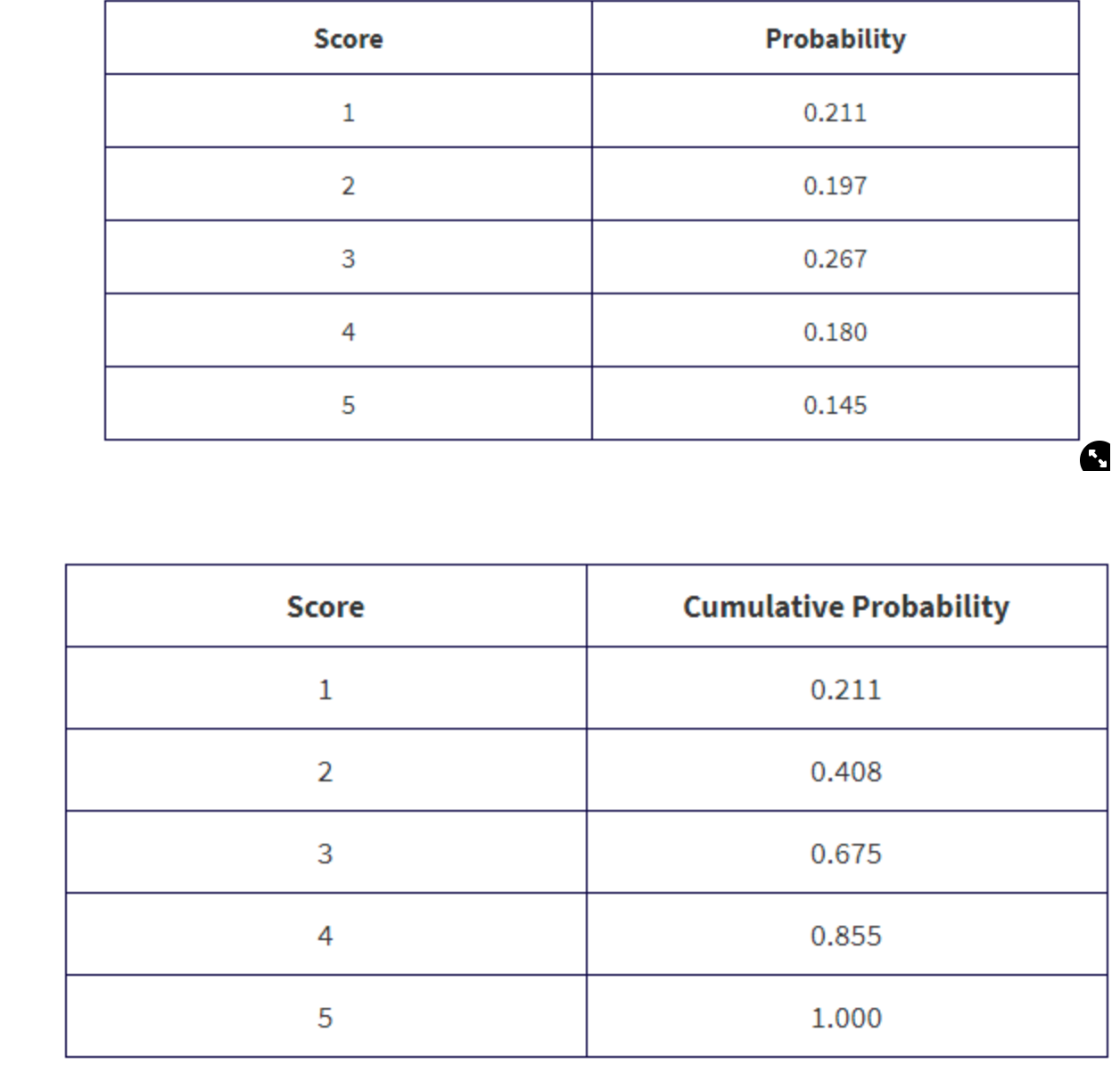Review-Ch 5 Statistics
1/48
Earn XP
Description and Tags
Probabilities
Name | Mastery | Learn | Test | Matching | Spaced |
|---|
No study sessions yet.
49 Terms
Probabilities
the long run frequency of an event
Probability Rules
ANY Probability is 0≤p(x)≤1
SUM of ALL probabilities is p(sum)=1
complement event, event’=1-p(event)
p(xc)=1-p(x)
the ‘ and power of c means the notation for the even not occurring
Law of Large numbers
in the long run, a cumulative relative frequency is closer and closer to the true probability of an event
random sampling, the larger the sample, the closer the proportion of success will be to the proportion of the population.
Simulation Process
Assumptions
______ selected independently of EACH other
____%
Assign digits & Model
Number 01-99, ignore 00 and excess
Numbers 00-99
single run
WHICH/HOW summary statistics will be recorded
Stimulate multiple/many repetitions
Record results in a frequency distribution
conclusion
Make sure it is in context
estimated probability as a decimal
*Try to write EVERY possible outcome
*flip sign and +- SAME constant from mean→ SAME probability
Multiplication Principle
The TOTAL possible outcome na wants x nb way
Sampling with/without replacement
Math
Independent: P(A) P(B)
Dependent: P(A) * P(B | A)
Conditional Probability
May NEED to restrict in denominator values because of the “given that” → shrinks the population of interest
Math
P(__| __): given that
Mutually Exclusive
Events that cannot occur simultaneously
doesn’t imply independence
can ADD Probabilities
Independant events
Results don’t affect EACH other
can multiply probabilities
can be assumed for large populations
Dependent events
EXPLICITLY write down EACH value/trial because results affect each other
Formula for mutually exclusive or not
Not mutually exclusive | Mutually exclusive |
|---|---|
p(AUB)=p(A)+p(B)-p(A∩B) | p(AUB)=p(A)+p(B) |
the mutually exclusive is because p(A∩B)=0 because events can’t happen at the SAME time
p(A∩B)
Probability of A and B
Independent:p(A∩B)=p(A)*p(B)
Dependent: (A∩B)=p(A)*p(A|B)
p(A U B)
Probability of A or B
Independent: p(A)+p(B)-p(A∩B)
Dependent: NONE
p(A|B)
Probability of A given that B
Independent: p(A)
Dependent: p(A∩B)/p(B)
Probability distribution
the number of practical outcomes of a CHANCE process
follows probability rules
set number of trials
x variable =number of success
Scenarios
if not ALL values are EXPLICITLY shown for probability → calculate what you can to solve
only several values, not all→ consider minimum, mean/median, maximum

Expected value
the net value on average
Math
ux=E(x)=np
ux
the mean of x variable
Math
ux=Σxi *p(xi)
σ x
the stndard deviation of x variable
σ x= √ (Σxi - ux )²*p(xi)
sq root all
( σ x)²
variance
finiding z score through norrmal distribution
invnorm
given the % of area
using (o,1) as (u,σ ) for the default
Z formula
z=(x-u)/σ
C (Linear transformation )
C=shift in +-
only affects the mean
Math
uc+dx=|d|ux+c
σ c+dx=|d|σx
D(Linear transformation )
A transformation of *
affects BOTH the mean and the standard deviation
Math
uc+dx=|d|ux+c
σ c+dx=|d|σx
u mean (Combining sets)
u can also mean E(x), the expected vlalue
Math
ux+y=ux+uy
ux-y=ux-uy
σ standard deviation (Combining sets)
for the formulas, need to be √ and have ² inside because standard deviations are ALWAYS positive
Math
σx+y=√(σ²x+σ²y)
σx-y=√(σ²x-σ²y)
σ² varience (Combining sets)
Usually, a NEW variable is created which represents a total
remove the √ because variance is standard deviation ²
Math
σ²x+y=(σ²x+σ²y)
σ²x-y=(σ²x-σ²y)
Linear Combination
when constants are multiplied in
for mean, just multiply in
for sd and variance, need to square values
Math
u= aux+bux
σ=√a²σx²+ b²σy²
σ²=a²σx²+ b²σy²
Binomial Distribution (Definition)
BINS
B: Binary(2 outcomes ONLY)
I: Independent(outcomes don’t affect impact EACH other)
N: Number of trials is FIXED
S: Success probability (is constant)
as n, the number of trials, increases→ shape of distribution becomes MORE normal
Binomial Distribution (steps)
STEPS
Name the distribution(ie. binomial…)
Set Parameters(ie. n=, p=)
Boundaries(eg. at least…)
Direction(inequalities signs)
Correct probability
Binomial Distribution (formula’s)
Math
ux=np
σx√=np(1-p)
σx²=np(1-p)
at p=0.5→ variance increases as n increases
fixed n value, V is the maximum when p=0.5

Geometric Distribution (Definition)
BINS
B: Binary(2 outcomes ONLY)
I: Independent(outcomes don’t affect impact EACH other)
N: Number of trials is not FIXED
S: Success probability (is constant)
random variable, x, COUNTS trial NO. until the first success
*most likely value is 1
expected trials till nth success = np
the probability of EACH success value decreases by a factor of q= 1-p
Shape: ALWAYS unimodal and skewed right
Geometric Distribution (steps)
STEPS
Name the distribution(ie. geometric…)
Set Parameters(ie. p=)
The trial on which the first success occurs(x=)
Correct probability
Geometric Distribution (formula’s)
Math
q=fail, p=success
q=1-p
ux= 1/p
σx= (√ 1-p)/p
Probability that the 1st success occurs on the xth outcome
p(x=_)=geompdf(p= ,x=)
p=probability of a single trial, = first success occurrence
more than x tries till first success(calculator)
p(x>_)=1- geomcdf(p= ,x=)
the 1- and the x=number means everything “ABOVE”
cumulative probability of x or BEFORE xth trail
p(x=_)=1geomcdf(p= ,x=)
p=probability of a single trial, = first success occurrence
n is not given→leave empty
“First success occurrence ON or BEFORE xth trail”
Probability of exactly x success
binompdf(n,p,x)
n=total no. of trial
p=probability of success of a single trial
x=number of wanted success’s
Cumulative probability of f or FEWER success in n ways
binomcdf(n,p,x)
n=total no. of trial
p=probability of success of a single trial
x=c or fewer success
At least… binom
p=(x≥number)
1-binomcdf(n=,p=,x=number-1)
fewer than…
(x<number)
binomcdf(n=,p=,x=number-1)

interpret the formula for binomial
(n on top of p) = n!/(k!q!)
n=total trial no.
k=wanted
p=probability
q=p-1

Sample space
set of ALL possible outcomes
ie {H, T}
Event
Outcome OR set of outcomes of a random thing
Probability model
Assign probabilities to EACH event inn sample space
example
p(tails)=0.5
p(heads)=0.5
Random
A regular pattern can be inferred if long repetitious trials are run, but for individual outcomes→this is uncertain
Tree diagram
used for multi step problems
Label the start and then < grow on

Venn diagrams
intersections overlap→ don’t “repeat” them, so may need to use subtraction
outside circle: “none of above”
rectangle box=sample space

U
add, union
∩
or
1 event or BOTH occurring
Relative frequency
proportion of times the event happened
number of times event happened/total number of trials
Cumulative probability distribution
A function, table, or graph that links outcomes with the probability of less than or equal to that outcome occurring.
